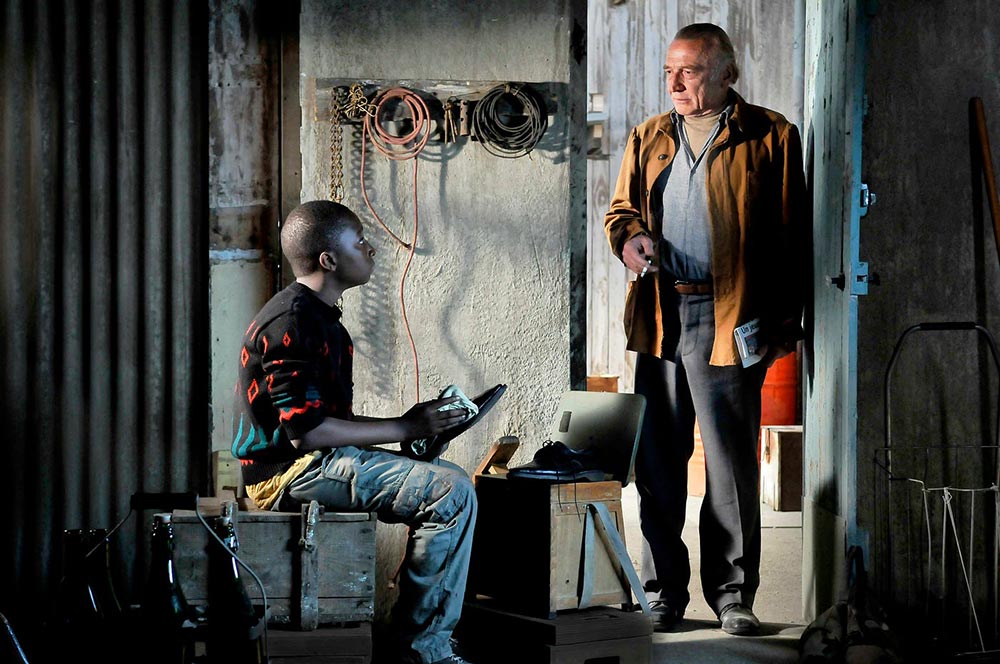The inciting event in Aki Kaurismäki’s Le Havre (2011) is the offering of a ham sandwich. Marcel Marx (André Wilms), a shoeshiner and former bohemian from Paris, is eating his lunch on the docks of the titular French port city when he spies a young Gabonese refugee named Idrissa (Blondin Miguel) wading in the icy water. “Is this London?” asks the hopeful drifter. Stunned by the scene, Marcel responds by stating they are in Normandy, and then quickly offers him his sandwich. Soon, Idrissa will sleep on the Frenchman’s couch, and Marcel will help Idrissa get to the United Kingdom without hesitation. This small but sincere gesture not only sets the tone of the film, but is typical of the Finnish auteur, whose understated films favor the predicaments of working class people over extraordinary events.
Le Havre takes place in the early aughts but functions like a World War II resistance film in the vein of Casablanca (1942) or Army of Shadows (1969). Marcel’s neighborhood is imaginative and outrageously French. There’s a boulangerie next to a humble brasserie where accordion music entertains the barflies. Marcel frequents both establishments when he’s not shoeshining or with his wife Arletty (Kaurismäki regular Kati Outinen), who suddenly becomes very sick. He’s generally dismissed for his thrifty, bohemian lifestyle. He’s known for stealing bread rather than buying it, but when Idrissa shows up at Marcel’s door, the neighborhood changes their tune. They lend Marcel extra food and offer moral support. Everyone in the film, except for a foolish informer played by Jean-Pierre Léaud, supports the underdog. They lend a helping hand because they share a common enemy: the police.
Kaurismäki makes it his goal to avoid stereotypical visions of the refugee crisis in Europe. When Idrissa and the other Gabonese refugees arrive at the beginning of the film, they are shown inside a shipping container. When the hatch is pulled by the French authorities, Kaurismäki allows the camera to linger over everyone’s faces in a humanist montage that evokes the work of Renoir. In an interview with Film Comment, Kaurismäki revealed that he initially wrote that the living conditions inside of the container were filthy. He couldn’t stomach the realism of that event, so instead, each character is shown proudly wearing their Sunday best upon reveal. In many ways, this is how the film functions too. Kaurismäki gives us hope rather than gut-wrenching visions of reality with Le Havre.
Le Havre screens tonight, June 15, and throughout next week, on 35mm at Anthology Film Archives as part of the series “5 by Aki Kaurismäki.”



